

Guide to Selector Switches
Catalog
What Is Selector Switch?Features of Selector SwitchesSelector Switch TypesApplications for Selector SwitchesFrequently Asked QuestionsRelated ArticlesWhat Is Selector Switch?
A mechanical switch that can be turned to the right, left, or centered position to either open or close electrical contacts is referred to as a selector switch. The primary role of this switch is to manage devices and to toggle between a minimum of two or more electrical circuits. Such switches are suitable in scenarios where multiple control options are necessary; for example, when it needs to be triggered for a predetermined duration, or once triggered, it needs to be positioned at a specific setting. These switches offer a range of flexible control options in a compact space to accomplish various tasks. The operating principle of a selector switch is to manage different current paths by rotating the knob. These switches consist of a straightforward selector switch on the front panel, as well as a combination of possible internal contacts within the switch. The symbol for the selector switch is depicted below.


selector switch symbol
Features of Selector Switches
1. Diverse Input Paths :
Selector switches are capable of managing two or more input paths, permitting users to choose between a variety of signal sources.
2. Unified Output Path :
No matter the quantity of inputs, selector switches generally direct the chosen input signal to a single output path.
3. Mechanical or Solid State Activation :
Certain selector switches function through mechanical means, involving tangible components, while others function electronically, utilizing solid state technology without any moving parts.
4. Sturdiness and Dependability :
Superior selector switches are crafted for longevity and trustworthiness, capable of withstanding a defined number of operational cycles prior to succumbing to failure.
5. Minimal Signal Loss :
Effective selector switches exhibit minimal signal loss when directing a selected input to the output, ensuring that the signal remains largely unimpaired.
6. Superior Separation :
Selector switches must offer superior separation between non selected inputs to avert any signal seepage and potential interference.
7. Rapid Switching Efficiency :
In applications demanding swift transitions between inputs and outputs, the rate at which selector switches can make these changes is a crucial attribute.
8. Signal Power Management :
Selector switches are required to manage the power intensity of the signals they direct without causing any distortion or damage.
9. Manipulation Interface :
Selector switches can be manually operated or controlled via a range of interfaces, including digital signals, analog voltages, or through software commands within automated systems.


Features of Selector Switches
Selector Switch Types
1. Short Handle
This selector switch features a compact handle, which makes its operation somewhat challenging. These switches are offered at an affordable price.
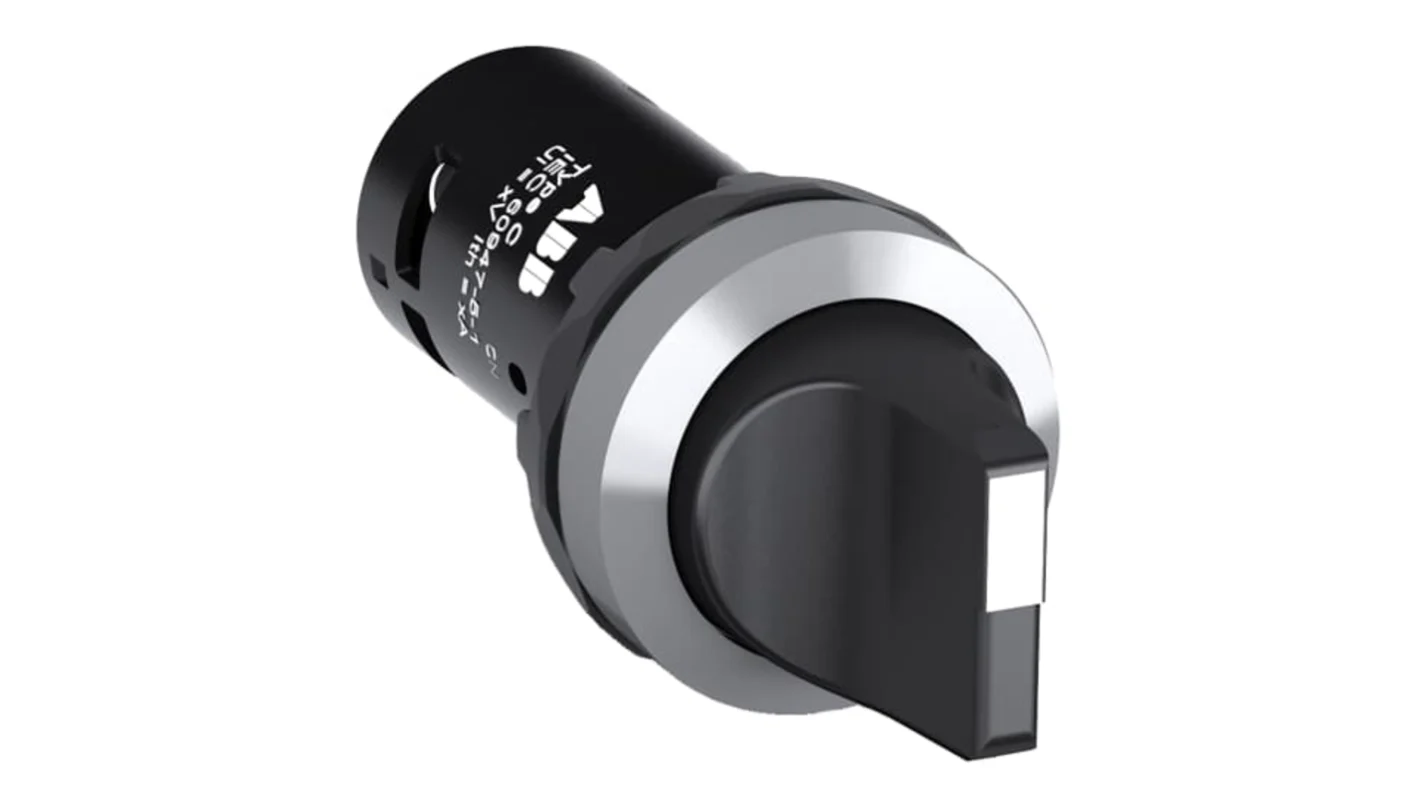

Short Handle
2. Long Handle
Equipped with an extended handle, this switch is user friendly and easy to operate. However, compared to the short handled variant, these switches come with a higher price tag.
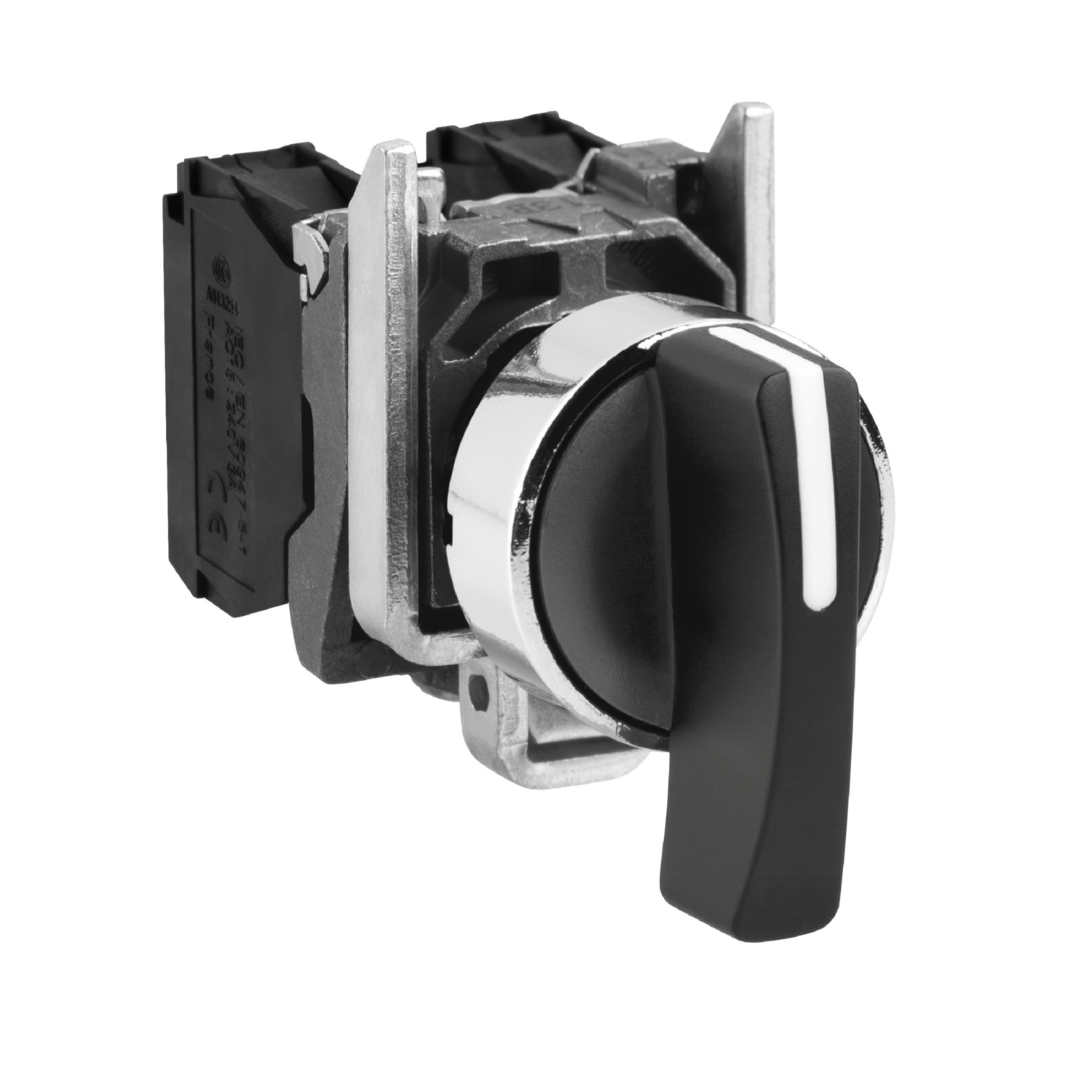

Long Handle
3. Key Operated
Designed for security purposes, this selector switch allows the knob to be detached from various positions. Once the knob is removed, no further actions can be performed. These switches incorporate a locking mechanism to enhance operational safety, and the switching action can only be initiated with the appropriate key.
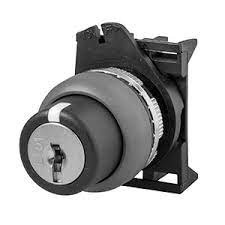

Key Operated
4. Illuminated
As the name implies, this switch incorporates a light element for illumination. These switches are cost effective and space saving by combining two functionalities into one unit. They are used to manage equipment at different settings and are particularly useful in low light conditions to help workers determine the status of the equipment.
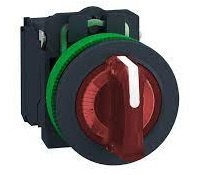

lluminated Selector Switch
5. Non illuminated
Lacking a light element, these switches have a more robust operator compared to illuminated switches. Primarily used to control machinery at various settings and approaching with a contact block, these switches are ready for installation. They are suitable for applications where multiple setting options are desired.
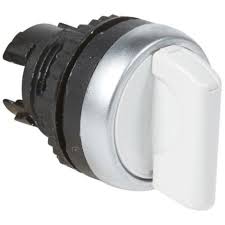

Non-illuminated
6. 2 Position
This type of switch alternates between two electric circuits, allowing for either a temporary or sustained connection.
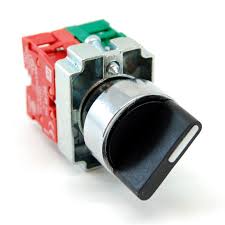

2 Position Selector Switch
7. 3 Position
This switch facilitates switching between three electric circuits, enabling selection of any two sets of contacts or disconnecting both sets. It can also be designed for either momentary or sustained operation.
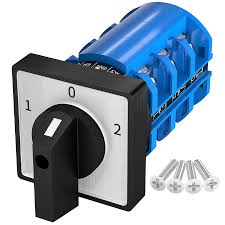

3 Position Selector Switch
Applications for Selector Switches
1. Home Entertainment Setups :
Selector switches are employed in home theaters and audio systems to toggle between various input sources like DVD players, gaming consoles, or streaming devices, all connected to a single television or audio receiver.
2. Communication Systems :
Within the framework of telephone exchanges and network infrastructure, selector switches are responsible for directing calls from one telephone line to another or to a designated output, depending on the dialed number or received signal.
3. Manufacturing and Automation :
In industrial settings, selector switches enable the command and surveillance of several machines or processes from a centralized control panel, permitting operators to interchange between distinct systems or processes as required.
4. Laboratory Instruments :
Selector switches are utilized in lab settings to channel signals from an array of testing devices to a unified measuring instrument or to alternate between various testing configurations.
5. Data Networking :
In the realm of computer networking, network switches employ selector logic to manage the flow of data packets from one network port to another, based on the packet's destination address, optimizing the route that data takes.
6. Vehicle Electronics :
Within automobiles, selector switches are tasked with managing an array of electronic systems, such as changing between different radio stations, adjusting climate control settings, or selecting different driving modes.


Applications for Selector Switches
Frequently Asked Questions
1. Purpose of a Selector Switch :
A selector switch is utilized to manage devices and to toggle between at least two or more electrical circuits. It is ideal for scenarios where the output of a device needs to be controlled.
2. Distinction Between Rotary and Selector Switches :
Rotary Switches: Provide a broad range of positions, often exceeding 10. This flexibility is suitable for intricate circuit configurations and a variety of settings. Selector Switches: Generally, they have only 2 or 3 positions, catering to straightforward on/off or three position switching requirements.
3. Difference Between Selector Switch and Push Button :
The selector switch is a variant of a push button that permits the user to select among various settings, such as "on," "off," or "manual." For instance, adjusting a motor's speed between high and low using a selector switch.
4. Alternative Name for a Selector Switch :
A Rotary or Selector Switch is a type of switch that operates by rotating an actuator, typically equipped with a control knob, to switch between 2 or more circuits.
5. Operation of a Rotary Selector Switch :
It comprises a rotating shaft with a rotor and a moving contact or disk that is connected to a contact plate. The rotation of the shaft or disk causes the contacts to either separate or join, thus completing or interrupting the circuit with the contact housing.
6. Role of a Function Selector :
The function selector is responsible for identifying which operation, out of those defined on the linked interface, should be activated. Interfaces that are made accessible through an export can encompass multiple operations. Upon the reception of an incoming request, the export employs a function selector to ascertain which operation needs to be executed.
7. Theory Behind a Selector Switch :
A selector switch can manage the activation or deactivation of different current circuits by turning the handle. It is commonly used for controlling devices that are mechanical, electrical, or electronic, facilitating the establishment or disruption of connections within a circuit.
8. Utilization of a Selector Switch :
Selector switches can be turned left or right to either separate or join electrical contacts. Their function is to control devices and switch between at least two or more circuits. Ideal applications for selector switches include controlling the output of a device.
Related Articles
Subscribe to JMChip Electronics !



















